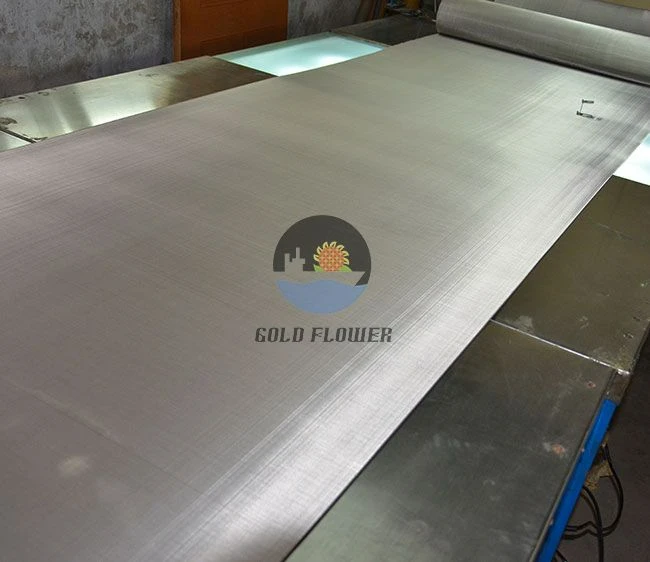Nov . 15, 2024 10:31 Back to list
wire mesh
The Significance of Wire Mesh in Modern Applications
Wire mesh is a versatile material that has found extensive use across various industries due to its unique properties and myriad applications. Composed of interwoven strands of wire, wire mesh serves as a barrier, filter, or enclosure, offering structural integrity along with flexibility. This article delves into the significance of wire mesh, exploring its types, applications, and advantages that make it a crucial component in modern engineering and construction.
Types of Wire Mesh
Wire mesh can be categorized based on material, size, and weaving pattern. The most common materials used include stainless steel, galvanized steel, aluminum, and plastic. Each material offers distinct benefits suited for specific applications. For instance, stainless steel wire mesh is known for its corrosion resistance and durability, making it ideal for outdoor applications and environments that demand hygiene, such as food processing plants. Conversely, galvanized steel mesh provides an excellent balance of cost-effectiveness and longevity, which is beneficial in construction and security systems.
The weaving patterns of wire mesh also differ—welded and woven being the two primary types. Welded wire mesh involves the fusion of wires at their intersections, creating a strong, rigid structure suitable for concrete reinforcement and fencing. On the other hand, woven wire mesh consists of wires that are interlaced, providing flexibility and making it suitable for filtration and screening applications.
Applications of Wire Mesh
The applications of wire mesh are vast and varied, spanning several sectors. In the construction industry, wire mesh is commonly used for reinforcing concrete structures. It enhances the tensile strength of concrete, ensuring that buildings, bridges, and roads can withstand weight and stress without cracking. Additionally, wire mesh is often employed in making fences, providing security while allowing visibility—a crucial requirement for both residential and commercial properties.
In the industrial sector, wire mesh serves as a filtering medium in processes like air and water filtration. Its ability to separate different materials makes it invaluable in operations like mining, where it is used to screen aggregates. Additionally, in chemical processing, wire mesh filters ensure that unwanted particles do not contaminate products, maintaining compliance with safety standards.
wire mesh

Wire mesh is also widely used in agriculture. It forms the basis of cages for poultry and small animals, safeguarding them from predators while allowing adequate airflow and visibility. Gardeners utilize wire mesh to create trellises for climbing plants and to protect crops from pests. Its versatility ensures that it is an indispensable tool for farmers and gardeners alike.
Advantages of Wire Mesh
The benefits of wire mesh go beyond its versatility and wide-ranging applications. One of the primary advantages is its strength-to-weight ratio; wire mesh structures can withstand significant loads without being prohibitively heavy. This characteristic makes wire mesh a preferred choice in applications where weight is a critical factor.
Furthermore, wire mesh is easy to install and maintain. Many types of wire mesh can be cut and shaped to fit specific needs, allowing for customized solutions in varied applications. The longevity of wire mesh, particularly when made from stainless steel or galvanized materials, also contributes to its cost-effectiveness, as it does not require frequent replacement or repairs.
Lastly, wire mesh is environmentally friendly. Its recyclability contributes to sustainability efforts, as old wire mesh can be repurposed into new products, reducing waste and the demand for new raw materials.
Conclusion
In conclusion, wire mesh is an essential material that plays a pivotal role in numerous industries, from construction to agriculture. Its diverse applications, coupled with its advantages in strength, ease of use, and sustainability, underscore its importance in modern society. As technology advances and industries evolve, the reliance on wire mesh for innovative solutions will likely continue to grow, affirming its status as a foundational component in various engineering and construction projects. The future of wire mesh appears promising, ensuring that it will remain a key player in facilitating progress and development across multiple domains.
share
-
CE Certified 250 Micron Stainless Steel Mesh - Durable Filter
NewsAug.02,2025
-
Screen Mesh Price Deals | gpt-4-turbo Optimized Pricing
NewsAug.01,2025
-
CE Certified 250 Micron Stainless Steel Filter Mesh | Premium
NewsJul.31,2025
-
CE Certified 250 Micron Stainless Steel Mesh | Premium Filter
NewsJul.31,2025
-
CE Certification Buy Wire Mesh Fence for High Security and Durability
NewsJul.30,2025
-
Stainless Steel Mesh Filter Discs for Precise Filtration Solutions
NewsJul.29,2025

